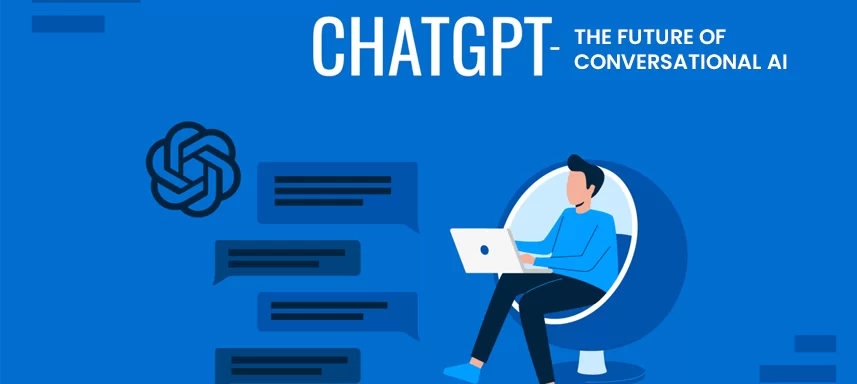Welcome to the first installment of our ChatGPT Tech Blog series. Today, we’re going to be talking about the key terms of ChatGPT, key use cases and key features in Part1.
Key Terms :
- OpenAI: chatGPT has taken the world by storm since last year. Who is the owner of chatGPT? OpenAI is the company responsible for developing ChatGPT. They have been at the forefront of AI research and have created impressive language models like ChatGPT.
- GPT-4: GPT4 is the latest iteration of OpenAI’s AI model, which powers ChatGPT. (The free version is powered by version 3.5 as of today). With each new version, the model’s capabilities and performance improve, bringing about more advanced conversational abilities.
- Generative AI: Generative AI is an exciting category of artificial intelligence. It encompasses systems, like ChatGPT, that has the ability to generate new content across various forms, including text, images, music, and movies. This innovation makes automated content development and creative applications possible.
- LLM (Large Language Model): LLM refers to a Large Language Model, such as ChatGPT. It’s comparable to having a language buddy by your side. These models are trained on vast amounts of text data, enabling them to predict the next word in a sentence or even generate entire paragraphs that sound natural and coherent.
By understanding these key terms, you’ll gain a foundation to explore the world of AI, ChatGPT, and its underlying technologies. Deep learning and AI starts with data and have an overlap with data science. These concepts play a crucial role in shaping the capabilities and potential of AI-powered language models. Now let us look at few important use cases.
Key Use Cases
- Learn a new topic by finding answers to a wide range of questions : ChatGPT can be used to learn about a new topic by finding answers to a wide range of questions. For example, you could ask ChatGPT “What is the history of Egypt?” or “How does the solar system work?” Then, a clear and informative response will be generated by ChatGPT.
- Writing assistance for generating content for articles, essays, blog posts, stories, etc.: ChatGPT can be used to generate content for a variety of writing projects. For example, you could ask ChatGPT to write an article about the latest technology trends in blockchain or to generate a story about a robot who falls in love with a child. ChatGPT will then generate a response that is well-written and engaging.
- Delegate your research for creating a report: ChatGPT can be used to delegate your research for creating a report. For example, you could ask ChatGPT to find information about the history of renaissance or to generate a list of sources for a research paper. Then ChatGPT will generate a succinct response that includes links to relevant sources
- Automate repetitive tasks: ChatGPT can be used to automate repetitive tasks. For example, you could ask ChatGPT to send emails to your clients or to create social media posts. A clear response will be provided by ChatGPT that is tailored to your specific needs.
- Translate one language to another: ChatGPT can be used to translate one language to another. For example, you could ask ChatGPT to translate a document from French to Spanish or to generate a conversation in Italian. ChatGPT will then generate a response that is accurate and natural-sounding.
- Troubleshooting and technical support for software, devices, or systems: ChatGPT can be used to troubleshoot and provide technical support for software, devices, or systems. For example, you could ask ChatGPT how to fix a problem with your computer or write a code snippet in python or a study plan for learning machine learning fundamentals. ChatGPT will then generate a response that is helpful and informative.
Now let us now delve into the key features of chatGPT.
Key Features
- Natural Language Understanding: ChatGPT can comprehend spoken language, enabling rich conversations. As a result, you may speak naturally to ChatGPT and it will be able to understand what you are saying.
- Generating human-like language responses based on context: Based on the conversation’s context, ChatGPT can provide responses that sound human. As a result, ChatGPT will be able to comprehend the context of your query or prompt and will produce a pertinent and instructive response.
- Handling a wide variety of topics and questions: The subjects and inquiries that ChatGPT can address are extremely diverse. As a result, you can ask ChatGPT any question, and it will be able to respond.
- Access to a vast amount of information and knowledge base: ChatGPT has access to a vast amount of information and knowledge. As a result, ChatGPT will be able to produce accurate and informative responses.
- Continuous improvement in model and responses as it receives feedback and updates its training data: ChatGPT is always being enhanced. This indicates that as it gets feedback and updates its training data, the model will get better over time.
ChatGPT is a powerful generative AI chatbot that has the potential to revolutionize the way we interact with computers. In the future, ChatGPT could be used for a wide variety of tasks like providing customer service, generating creative content, answering questions etc.
To use ChatGPT, you can simply go to the ChatGPT website: https://beta.openai.com/ playground and start typing in your questions or prompts. ChatGPT will then generate a response.
The future of ChatGPT is bright. As the model continues to be developed, it will become even more powerful and versatile. There are plugins that are available and also many applications are being developed. ChatGPT has the potential to change the way we interact with computers, and it is an exciting technology to watch. Tune in to Part2 of the series on chatGPT.

